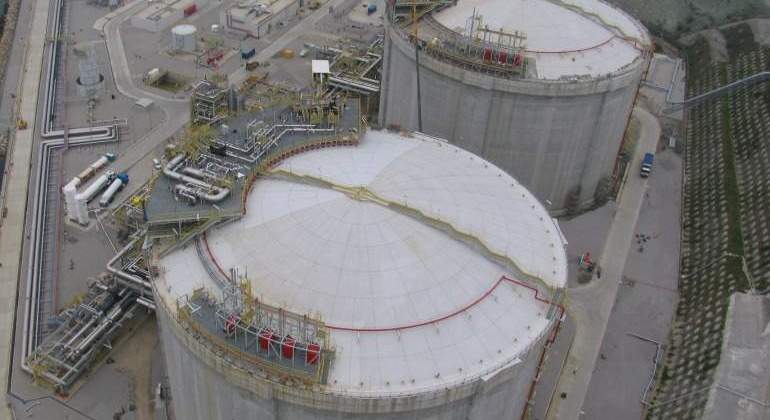Spain will double the arrival of LNG tankers this October to try to avoid the lack of gas supply this winter. According to the Operation Plan released by Enagás yesterday, the regasification plants expect to receive a total of 31 methane tankers that will contribute around 2.3 bcm of gas to the system, around 10% of annual consumption.
This amount, together with the entry of gas through the Maghreb and Medgaz gas pipelines, is expected to serve to bring gas reserves to close to 80% , as indicated by the CEO of Enagas, Marcelino Oreja, recently at Gastech.
According to data from the technical manager of the system, reserves are currently 72% in our country for underground storage and 55% for regasification tanks.
The marketers, in charge of bringing these boats, have to increase their level of reserves in the coming months to serve their customers and comply with the new requirements of the Winter Plan approved by the Government.
Ecological Transition has forced gas companies to increase reserves by almost 70% for the month of January with the intention of meeting the anticipated needs.
The traders will have to face these LNG purchases with prices at record highs and the enormous competition in the market for cargoes given the low levels of existing reserves.
In Spain there is usually a capacity of 250 slots per year. Enagas already had to hold an auction last September to increase trading companies’ access to the plants.
Record of demand
According to Enagás’ demand forecast, the probable winter peak of conventional demand for this coming winter estimates that the lowest temperatures in the last 5 years will occur, reaching 1,310 GWh / day.
In the event of the extreme peak of demand, an increase of 30 GWh / day would be recorded, derived from a decrease of 1.5º C with respect to the probable peak temperature, reaching 1,345 GWh / day.
These figures represent a strong increase compared to the forecasts registered last year, which placed the probable demand at 1,220 GWh / day and the extreme demand at 1,255 GWh / day.
Another factor that has increased uncertainty is the increased electricity production with gas plants this past September, which represents a new stone on the road for this winter. According to Enagás data, demand increased by 2.8% thanks in part to the boost in demand for combined gas cycles.
The forecast for the conventional sector in November is 1.7 TWh / month higher than the same month in 2020, due to the impact of COVID 19 on industrial demand, the warm temperatures of last year and the calendar difference. With regard to deliveries for electricity generation, a consumption of 0.3 TWh / month is expected higher.
For December, the forecast for the conventional sector is 0.4 TWh / month higher than December 2020. The forecast also includes a consumption higher than last year (2.4 TWh / month), mainly due to a forecast of lower wind generation and nuclear.
Geopolitical tension
In the midst of this price tension, the geopolitical game that is being played with gas took new steps yesterday. On the one hand, the president of the European Commission, Úrsula von der Lyen, agreed to study within the future package of measures that will present on December 14 the option of creating a European gas purchasing center.
The intention of the Community Executive is to achieve a firmer commitment to the contracts with the producing countries that have been demanding for years the signing of long-term agreements and prices linked to the price of oil.
The situation, however, could take an important turn. According to Platts, the Nord Stream 2 gas pipeline operator has started filling the first stretch of 27.5 bcm / y and plans to gradually increase pressure before conducting further tests.
In a statement, Nord Stream 2 AG said that the first section of the gas pipeline had already undergone pre-commissioning activities to guarantee the integrity of the pipeline, which has a capacity of 55 bcm (twice the Spanish consumption). The operator said in early September that its goal was to start commercial flow through the new gas pipeline to Germany before the end of the year. The timing of these trade flows is a key factor influencing the European gas markets.
According to S&P Global Ratings, rebalancing the European gas market will take time because “some key factors are structural, and we believe that Nord Stream 2 alone cannot fill the gap.”
Gazprom has increased its profits by around 30% thanks to the strong increase in natural gas prices.


